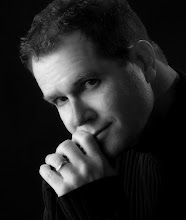 As photographers we face a unique challenge – take a three-dimensional world, squeeze it down and re-present it in just two-dimensions. Do this with skill and the viewers of our photographs are transported to the place we stood when we clicked the shutter.
As photographers we face a unique challenge – take a three-dimensional world, squeeze it down and re-present it in just two-dimensions. Do this with skill and the viewers of our photographs are transported to the place we stood when we clicked the shutter.Skilled painters have been doing this successfully for generations. So what do they know that we as photographers don’t? Three specific techniques that you can use in your photography: lighting, foreground/background placement and selective focus.
The photo I’m showing on this post, a classically styled outdoor portrait of 1-year-old Millie, illustrates these techniques.
Lighting. Use lighting to give shape and dimension to your subject. Lighting that is not flat but that is directional, reveals the form, shape and texture of your object. By directional I mean that when you look at the shadows you can figure out where the light is coming from. If there are no shadows, there’s no direction to your lighting and your object is going to look flat. In this photo, I had open sky to the right of the camera and supplemented it with a portable flash unit bounced into a large white umbrella. You can see the soft shadows on the girl’s face, arm and dress giving her dimension.
Foreground/background placement. Whenever you can place your subject behind a foreground element that partially blocks the subject and in front of a background that is partially blocked by the subject, you send cues to the viewer’s eyes that they are looking at a three-dimensional world. When things overlap, your brain translates what the eye is telling it as: “there are things at different distances out there in front of you”. Even on a two-dimension medium, your brain is going to interpret this overlapping information as “there is depth happening here”. Notice how the purple flowers, grass and trees all work together to make this happen.
Selective focus. Our eyes are amazing things, but they can only focus on one specific distance at a time. Try this: hold your right hand at arms-length and your left hand about half way out. Now concentrate on your right hand. Your left hand and whatever is beyond your right hand is kind-of discernable, but everything other than your right hand looks fuzzy, right? When you can reproduce this effect in a photo, again, your brain says, “I recognize depth!” In this photo, you’ll notice the purple flowers close to the camera and further behind our subject have that “fuzzy” look.
To achieve this effect, simply use the smallest number f/stop your lens is capable of when setting your exposure (like 2, 2.8 or 4). If you’re new to your camera, simply set your auto exposure to the “A” setting (for Aperture) before setting your f/stop and let your camera’s light meter do the rest! You can also use Photoshop to “blur” these areas, but why not nail it when you create the photo?
Good luck in creating your own photos with depth!
